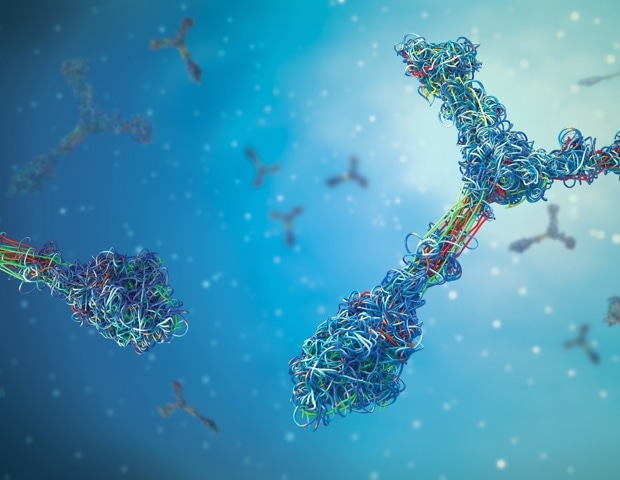
Researchers from Youngsters’s Hospital of Philadelphia (CHOP) recognized a key metabolite in cells that helps direct immune responses and explains at a single cell degree why immune cells that the majority effectively acknowledge pathogens, vaccines, or diseased cells develop and divide sooner than different cells. The findings additionally point out that a greater understanding of this metabolite and its function in immune response may enhance the design of immunotherapies and create longer-lived responses towards several types of most cancers in addition to improve vaccine methods. The findings had been printed on-line in the present day by the journal Science Immunology.
Antigens are overseas substances that our immune system acknowledges and responds to by producing extra T and B cells. These cells every have distinctive receptors that acknowledge particular antigens and may reply appropriately, they usually can “keep in mind” and reply equally when uncovered to the identical antigen once more. How nicely a T or B cell to sees its antigen is named its affinity. This elementary idea of immunology is how vaccines work. When these T and B cells encounter a pathogen, the physique wants those that acknowledge their antigen the very best, with excessive affinity, to divide extra rapidly to provide extra daughter cells and “assault” the invader.
Nevertheless, the underlying mechanisms as to why excessive affinity immune cells reply extra effectively have remained a thriller for researchers. After seeing an antigen, the chemistry inside T and B cells wants to alter to permit them to correctly reply. The researchers on this research needed to take a look at metabolism to grasp what causes excessive affinity cells to know that they should divide extra rapidly to reply appropriately.
We needed to see if particular metabolites had been delicate to T cell receptor affinity and managed T cell growth throughout immune responses.”
Will Bailis, PhD, Senior Research Writer, Assistant Professor of Pathology and Laboratory Medication at CHOP and the Perelman College of Medication of the College of Pennsylvania
The researchers recognized nicotinamide adenine dinucleotide (NAD) as a key, affinity-dependent part of T cell receptor metabolic reprogramming throughout the early levels of a T cell activation. Utilizing circulate cytometry, the researchers may take a look at NAD in single cells instantly after activation and present the way it dictates the variety of occasions T cells can divide sooner or later. Subsequently, researchers may basically predict how T cells behave and what number of occasions they divide based mostly on how a lot NAD they began with.
Moreover, the researchers discovered that manipulating how a lot NAD a cell was allowed to make may management when that cell went from a resting state to desirous to divide, suggesting that the metabolite could possibly be used to enhance response in sure T cell-driven therapies or vaccines.
“We consider this work reveals how single cell variations in metabolism are a key motive why related cells typically show strikingly totally different behaviors and that this will likely present perception into underlying processes that drive illness and dysfunction that can’t merely be defined by gene regulation or signaling,” Bailis stated. “With extra work, we additionally consider that this data may probably be used to enhance vaccine methods and the response and sturdiness of cell-based therapies used to deal with most cancers and different ailments.”
This research was supported by Nationwide Institutes of Well being grants K22AI141758, R35GM138085, R01DK098656, R01HL165792, P30ES013508, R01AI165706, and F31CA261156, a Youngsters’s Hospital of Philadelphia Cell and Gene Remedy Collaborative SEED Award, a Youngsters’s Hospital of Philadelphia Junior School Pilot Grant, Transfusion Medication Analysis Coaching Program grant 2T32HL00777528, Microbial Pathogenesis and Genomics Coaching Grant 5T32AI141393, and Immunobiology of Regular and Neoplastic Lymphocytes Coaching Grant T32CA009140.
Supply:
Journal reference:
Turner, L., et al. (2024). Single-cell NAD(H) ranges predict clonal lymphocyte growth dynamics. Science Immunology. doi.org/10.1126/sciimmunol.adj7238.


